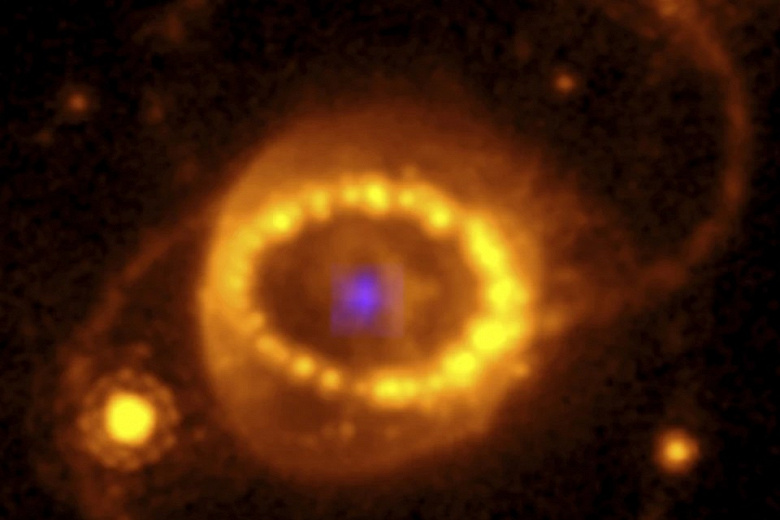Astronomers have a unique opportunity to study the processes of formation and early stages of the existence of this exotic object
Astronomers have confirmed that a star that exploded as a supernova and was visible from Earth more than 30 years ago has turned into a neutron star.
In 1987, astronomers witnessed a supernova event in a nearby galaxy. The intense burst of light from the star made it visible even to the naked eye for several months. For many years, scientists only speculated what the remains of the star had turned into: a black hole or a neutron star — the densest object in the Universe after black holes.
However, these are only assumptions, since astronomers could not see through the debris of the star, which was obscured by the abundant amount of dust. However, thanks to the James Webb Space Telescope, managed to collect data in the infrared range. Scientists noticed the presence of two chemical elements — argon and sulfur, indicating the presence of a neutron star.
Because the flare is recent and well tracked, this discovery should help astronomers better understand this type of event and the steps that preceded it that filled the Universe with important elements such as carbon and iron.
A neutron star resulting from a supernova explosion has standard characteristics — its dimensions are 20 kilometers, and its mass exceeds the mass of the Sun by one and a half times. Scientists say the aftermath of Supernova 1987A is likely the only time modern astronomy has witnessed the birth and first moments of a neutron star, although there are nearby, older neutron stars in our galaxy.
«In addition to black holes, neutron stars — the most exotic objects in the Universe. We have known about them since the 60s, but previously did not have the opportunity to see how they are formed», — said the study's lead author, Claes Fransson, an astrophysicist at the Swedish University in Stockholm.
The data obtained from supernova remnants shows a “pearl ring” surrounding a cloud of dust. It is in the heart of this cloud, according to astronomers, that a neutron star is located.
Since the supernova explosion was so recent and so close, it is «the gift that keeps on giving, teaching about neutrinos, the evolution of stars, and what happens after the explosion»,— wrote Stanford University astrophysicist Roger Blandford.
Observations of «James Webb» provided an opportunity to dive into the world of neutron stars, which will help expand knowledge about the physics of stellar explosions, the process of formation of heavy elements in the Universe and the evolution of stars. This research opens new horizons for astronomy and expands our understanding of the processes that occur after the death of stars.

